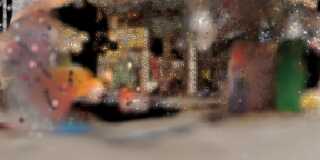|
 |
On 3/15/25 19:12, Paul Bourke wrote:
> There are also nasty defects in the 3.8 render (discs), see attached example
> frame. Strange they are mostly on the right half, it's those narrow dark
> slivers. Perhaps they are a cue to what's happening.
Got up to go to the bathroom(*) and, wow, a lot of posts in this thread.
One of the things I wanted to mention - and didn't as I rushed off to an
appointment yesterday - is that recent versions of POV-Ray do not
increment the trace depth on just transparency. This was a significant
change made to less often get black pixels on hitting the
max_trace_level limit. In other words, it means for your successful
renders, the end of frame output should have text which always reads:
Max Level: 1/6
The only thing stopping the actual internal recursion depth as you move
through multiple discs is the adc_bailout value. This sometimes causes
trouble because depending on any particular ray's path the recursion
depth due the number of surfaces traversed can get very deep. A trick
Alain taught me is that we can restore the old behavior by adding an
interior with an ior of say 1.00001.
Unfortunately, trying this trick didn't fix my v3.7 render even when I
reduced the radius to 0.24 (though at that radius the first blocks now
do render for a while before crashing).
With lidar data, it should be the case that where the radius is small
you traverse through very few - maybe always one - disc. As the radius
increases rays will need to traverse more and more surfaces and the
recursion depth will increase.
One thing which does work for my v3.7 render is changing the color_map
so everything is opaque. Offers a much clearer view of what is happening
with the discs too.
I next tried setting the maximum color_map transparency to 90% and now
my v3.7 renders are rendering fine. As does setting last color_map
transparency to 99%. Image attached (no AA).
So the issue has to do with overlapping regions of complete transparency
I guess. Wonder, does the ior 1+epsilon trick not work in v3.7? Hmm,
maybe with the spherical camera more rays hit the surface parallel to
surface normal? Don't know.
Lastly, you could play with higher adc_bailout values too as a solution
to the v3.7 rendering.
---
On your particular question about artifacts. The discs at larger radius
values will start to cross each other. Where they do there will be a
seam of numerical instability somewhat like coincident surfaces. Some
likelihood this is the cause of the artefacts, but unsure how to be sure
at moment. Can you filter out some range of discs closer to the camera
location?
Bill P.
(*) TMI.
Post a reply to this message
Attachments:
Download 'scene_v3.7_opaque0_990400.png' (194 KB)
Preview of image 'scene_v3.7_opaque0_990400.png'

|
 |




![]()